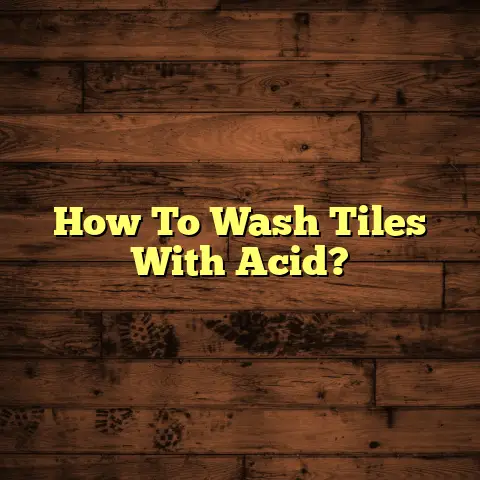Castile Soap Upholstery Cleaner? (4-Ingredient Pro!)
Transform your upholstery cleaning routine with the power of Castile soap! It’s a simple, eco-friendly solution that I believe outperforms commercial cleaners.
Section 1: The Rise of
Eco-Friendly Cleaning Solutions
Hey, have you noticed how everyone’s becoming more aware of what they’re bringing into their homes?
There’s a huge trend towards sustainable living and environmentally friendly cleaning products. I see it every day with my clients!
People are ditching harsh chemicals and looking for safer alternatives. That’s where Castile soap comes in.
It’s a historical cleaning agent, used for centuries. It actually originates from the Castile region of Spain.
Think about it: our grandparents and great-grandparents used this stuff. And now, modern consumers are seeking effective yet safe cleaning alternatives for their homes. It’s a full circle moment, right?
Section 2: What is Castile Soap?
So, what exactly is Castile soap?
Well, it’s a vegetable-based soap, traditionally made from olive oil. However, other oils like coconut, palm, or hemp are sometimes used these days.
The key is that it’s made without animal fats or synthetic detergents.
What are the benefits? So many!
It’s biodegradable. It lacks harsh chemicals. It’s gentle on the skin. It’s incredibly versatile.
Beyond upholstery cleaning, I’ve used it for everything!
-
Personal care: Body wash, shampoo, hand soap.
-
Household tasks: Dish soap, laundry detergent, floor cleaner.
It’s a real workhorse! Plus, it’s super concentrated, so a little goes a long way.
Section 3: Why Choose a
4-Ingredient Cleaner?
Why only four ingredients? Simple!
Less is more, especially when it comes to cleaning products.
Fewer ingredients usually mean fewer allergens and irritants.
Think about it: those commercial cleaners are packed with all sorts of synthetic fragrances, dyes, and preservatives.
Those can be tough on sensitive skin and even trigger allergies.
Here are the four key ingredients for my go-to Castile soap upholstery cleaner:
- Liquid Castile soap
- Distilled water
- White vinegar
- Essential oils (e.g., lavender, tea tree, or lemon)
That’s it! Nothing complicated. Just simple, effective cleaning power.
Section 4: The Science Behind
the Ingredients
Let’s break down why each ingredient is so important.
-
Liquid Castile soap: This is your surfactant. Surfactants help to lower the surface tension of water, allowing it to spread more easily and lift dirt and grime away from the upholstery fibers. Think of it as the engine of your cleaner.
-
Distilled water: This acts as a solvent. It dilutes the Castile soap, making it gentler on fabrics. Plus, distilled water is free of minerals and impurities that could leave spots or residue.
-
White vinegar: This is your natural deodorizer and stain remover. It helps to break down stains and kill bacteria. It can also help to brighten colors. Don’t worry about the smell! It dissipates quickly.
-
Essential oils: These add a lovely fragrance and can also provide antimicrobial properties. Lavender is calming, tea tree is antiseptic, and lemon is uplifting and grease-cutting. Choose your favorite!
Here’s a table summarizing the roles:
| Ingredient | Role |
|---|---|
| Castile Soap | Surfactant, lifts dirt and grime |
| Distilled Water | Solvent, dilutes and prevents residue |
| White Vinegar | Deodorizer, stain remover |
| Essential Oils | Fragrance, antimicrobial properties |
Section 5: Step-by-Step Guide to
Creating Your Castile Soap
Upholstery Cleaner
Alright, let’s get to the fun part: making the cleaner! Here’s my tried-and-true recipe:
Ingredients:
- 1/4 cup liquid Castile soap
- 1 cup distilled water
- 1 tablespoon white vinegar
- 10-15 drops essential oil (optional)
Equipment:
- Spray bottle
- Measuring cups and spoons
- Small bowl for mixing (optional)
Instructions:
-
Combine ingredients: In a spray bottle, combine the Castile soap, distilled water, white vinegar, and essential oils (if using). If you prefer, you can mix the ingredients in a small bowl first and then pour them into the spray bottle.
-
Shake gently: Close the spray bottle tightly and shake gently to combine the ingredients. Avoid shaking too vigorously, as this can create excessive suds.
-
Test on a hidden area: Before applying the cleaner to the entire upholstery, it’s essential to test it on a small, inconspicuous area. This will help you ensure that the cleaner doesn’t damage or discolor the fabric. Apply a small amount of the cleaner to the test area, let it sit for a few minutes, and then blot it with a clean cloth. Check for any adverse reactions before proceeding.
Preparation Tips:
- Use a good quality Castile soap. I prefer Dr. Bronner’s, but there are other great brands out there.
- Don’t use too much Castile soap. A little goes a long way, and too much can leave a residue.
- If you have hard water, you might want to increase the amount of vinegar slightly.
- Store your cleaner in a cool, dark place. It should last for several months.
Section 6: Application Techniques for
Optimal Results
Okay, you’ve made your cleaner. Now, how do you use it? Here are a few tips:
Application Methods:
- Spray bottle: This is great for general cleaning and light stains. Simply spray the cleaner onto the upholstery and blot with a clean cloth.
- Sponge: This is good for more localized cleaning. Dampen a sponge with the cleaner and gently scrub the affected area.
- Cloth: This is ideal for delicate fabrics. Dampen a cloth with the cleaner and gently wipe the upholstery.
Fabric Care Tips:
- Identify the fabric type: Before cleaning, check the upholstery tag to determine the fabric type. Some fabrics, like velvet or silk, require special care.
- Vacuum first: Always vacuum the upholstery before cleaning to remove loose dirt and debris.
- Blot, don’t rub: When cleaning, always blot the stain instead of rubbing it. Rubbing can damage the fibers and spread the stain.
- Dry thoroughly: After cleaning, allow the upholstery to air dry completely. You can speed up the drying process by using a fan or opening a window.
Tackling Tough Stains:
- Act fast: The sooner you address a stain, the easier it will be to remove.
- Pre-treat: For tough stains, you can pre-treat the area with a paste made of baking soda and water. Apply the paste to the stain, let it sit for a few minutes, and then blot it with a clean cloth.
- Repeat: You may need to repeat the cleaning process several times to completely remove a stubborn stain.
Maintaining Upholstery Longevity:
- Regular cleaning: Vacuum your upholstery regularly to prevent dirt and dust from building up.
- Spot clean: Address spills and stains immediately to prevent them from setting.
- Professional cleaning: Consider having your upholstery professionally cleaned every year or two to maintain its appearance and extend its lifespan.
Here’s a quick guide to fabric types:
| Fabric Type | Cleaning Notes |
|---|---|
| Cotton | Generally durable, but can shrink. Test in a hidden area first. |
| Linen | Can stain easily. Blot spills immediately. |
| Polyester | Stain-resistant and easy to clean. |
| Velvet | Requires special care. Use a soft brush to restore the pile after cleaning. |
| Silk | Very delicate. Professional cleaning recommended. |
Section 7: Real-Life Examples and
Testimonials
I’ve seen this cleaner work wonders in my clients’ homes. Here are a few examples:
-
The Case of the Red Wine Stain: A client spilled red wine on her light beige sofa. I used the Castile soap cleaner, and after a few applications, the stain was completely gone! She was amazed.
-
The Pet Accident Rescue: Another client’s dog had an accident on their favorite armchair. The cleaner not only removed the stain but also eliminated the odor. They were so grateful.
Here’s what one of my clients, Sarah, had to say:
“I was hesitant to try a homemade cleaner on my expensive sofa, but I’m so glad I did! The Castile soap cleaner worked like a charm, and it smells so much better than those chemical-laden commercial cleaners.”
Before-and-After Scenarios:
Imagine a faded, stained armchair. After cleaning with the Castile soap solution, the colors are brighter, the stains are gone, and the fabric looks refreshed.
It’s like giving your furniture a new lease on life!
Section 8: Troubleshooting Common
Issues
Okay, so what happens if things don’t go as planned? Here are a few common issues and how to fix them:
-
Stubborn stains: If the cleaner doesn’t remove a stain completely, try pre-treating the area with a baking soda paste or a commercial stain remover. You may also need to repeat the cleaning process several times.
-
Fabric damage: If you notice any damage to the fabric, stop cleaning immediately and consult a professional upholstery cleaner.
-
Residue: If you use too much Castile soap, it can leave a residue on the upholstery. To remove the residue, simply wipe the area with a clean, damp cloth.
What to Do If the Cleaner Doesn’t Yield the Expected Results:
- Check your ingredients: Make sure you’re using good quality Castile soap and distilled water.
- Adjust the recipe: You may need to adjust the recipe to suit your specific needs. For example, if you have hard water, you might need to add more vinegar.
- Consult a professional: If you’ve tried everything and the cleaner still isn’t working, it’s time to call in the pros.
Here’s a troubleshooting table:
| Issue | Possible Cause | Solution |
|---|---|---|
| Stubborn Stain | Stain is old or deeply embedded | Pre-treat with baking soda paste or commercial stain remover |
| Fabric Damage | Fabric is delicate or cleaner is too harsh | Stop cleaning and consult a professional |
| Residue | Too much Castile soap used | Wipe the area with a clean, damp cloth |
| No Improvement | Incorrect ingredients or recipe | Double-check ingredients and adjust recipe if necessary |
Section 9: Conclusion
So, there you have it! My ultimate 4-ingredient Castile soap upholstery cleaner.
It’s effective. It’s eco-friendly. And it’s incredibly easy to make.
I truly believe that this simple solution can help you achieve cleaner, fresher upholstery without compromising your health or the environment.
Why not make the switch?
Call to Action
I invite you to try making this Castile soap upholstery cleaner yourself. Share your experiences! Let me know how it works for you.
Together, we can create a cleaner, greener world, one sofa at a time.
Let’s embrace the power of simple, sustainable living! What are you waiting for? Go get cleaning!





